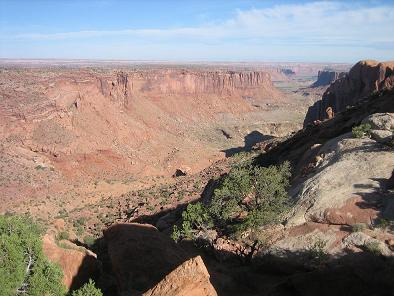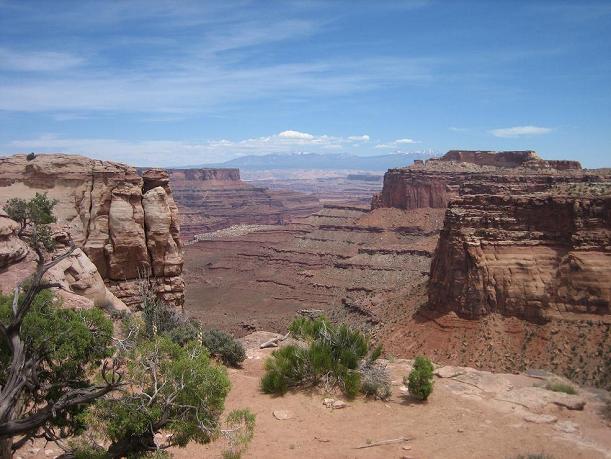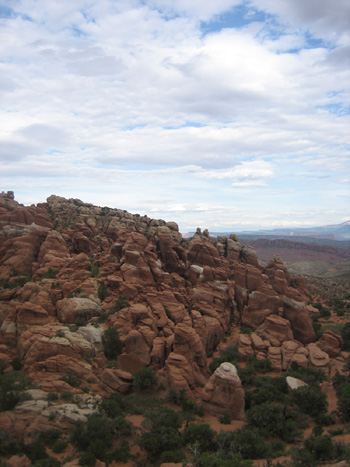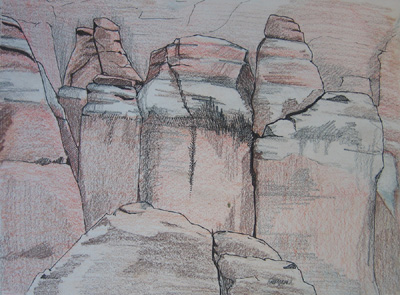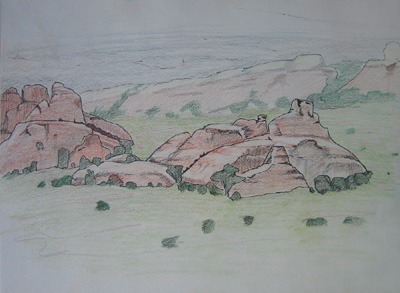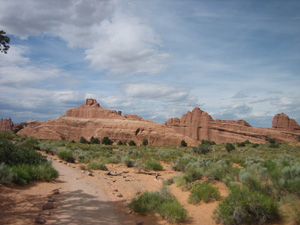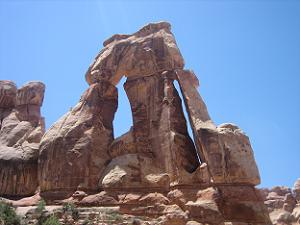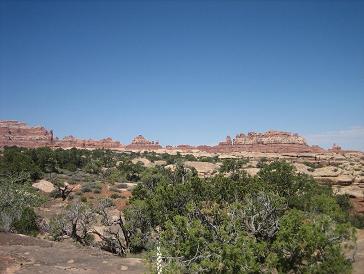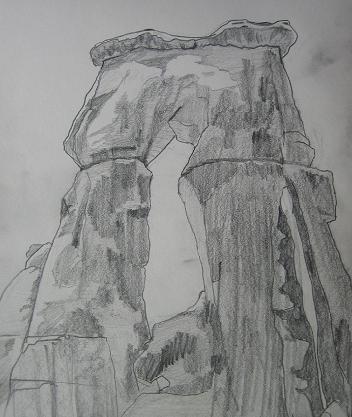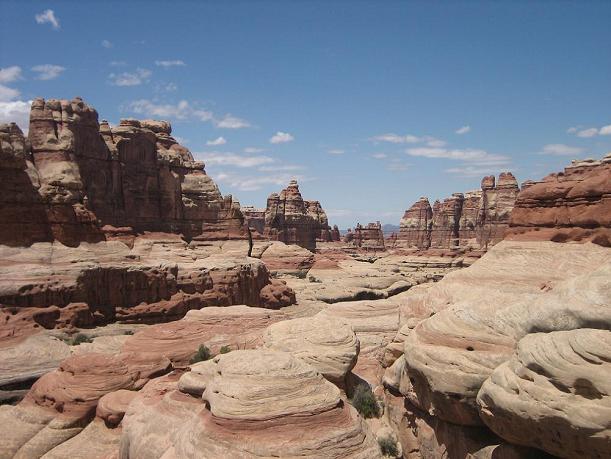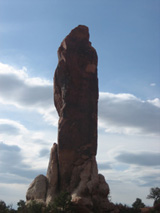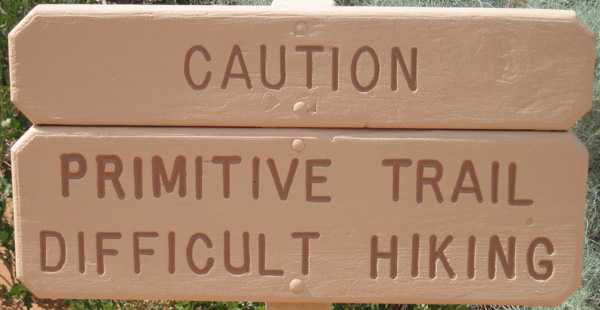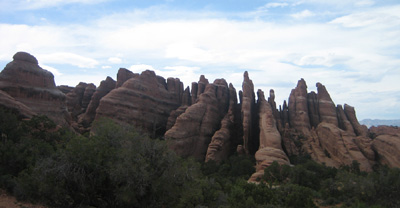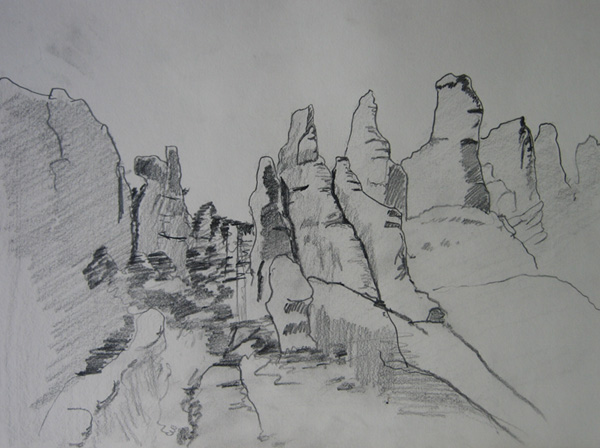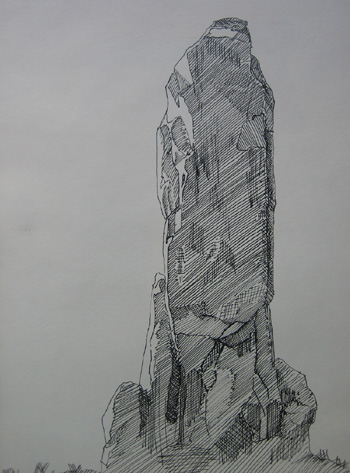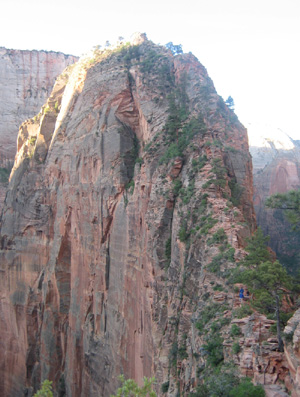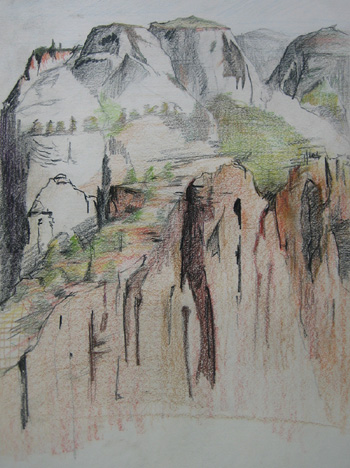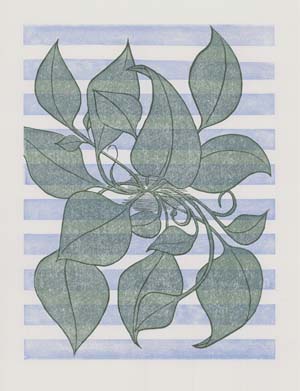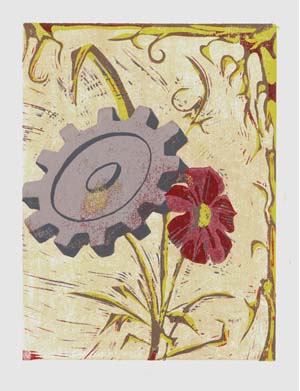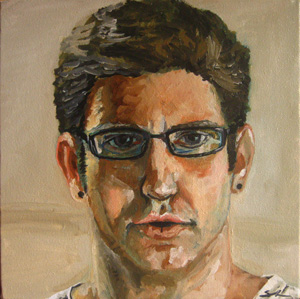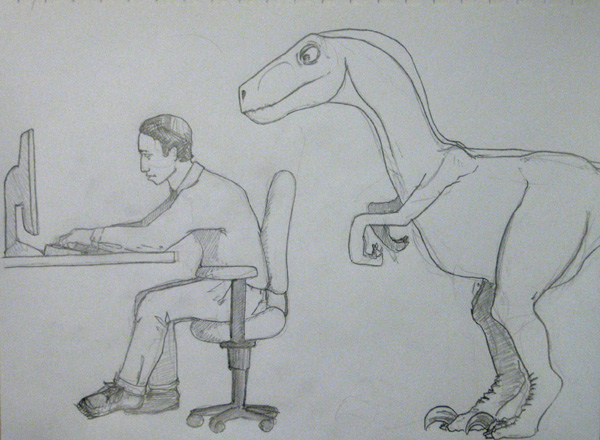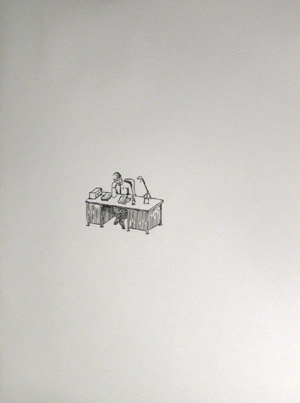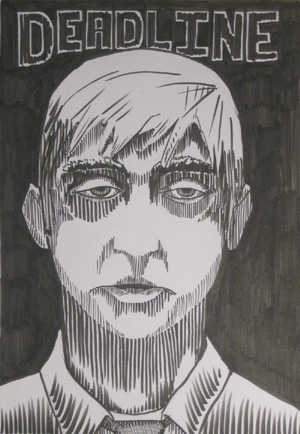I spent last week in Utah, climbing and roaming around the desert in the middle of nowhere. These posts are about the things I saw, the places I climbed, and sometimes, the drawings I made. Previous day’s journeys include climbing to Angel’s Landing, weaving through Devil’s Garden, threading the Needles to Druid Arch, and Walking through the Fiery Furnace. This post is the conclusion.
From Friday, June 5
I packed up camp this morning. After today’s hike, I would head back home.
I had one more stop to make before I left, the Island in the Sky.
Island in the Sky is the northern district of Canyonlands National Park. It is named for the plateau that extends over most of the district, a thousand feet above the surrounding desert.
I hiked down, then back up, that plateau today. 1,300 feet, from top to bottom.
I went to upheaval dome. It is a large depression at the end of the large plateau that is either caused by salts dissolving under the rock, or by a meteor. I like to think that it was the meteor. Space is more interesting than salt.
I hiked the Syncline trail. It follows the plateau around the crater on the southeast side, then climbs down the mountain and circles the outer ridge of rock that surrounds the crater (or something like that). Then it climbs back up the mountain.
The trail had a stark warning: this was a difficult trail, but I eat difficult trails for breakfast. I wasn’t concerned.
The first half mile or so was flat, and an easy walk. Then I hit the descent.
I started weaving and moving my way down a rocky hill. After several hundreds of feet of descent, I came to a landing. I had a magnifiscent view of a valley extending out before me. I also had a view of the next 500 or so feet of descent in front of me. I got to work.
The climb down was steep, but it was early, and the morning sun hadn’t risen enough to beat down on me, I could climb in the shade of the mountain for most of the descent.
Eventually I reached bottom, and followed a canyon bottom for the next few miles. There was a touch of water in places, and some of the areas I walked through were quite lush with vegetation. Much more lush than I expected from the desert.
As I walked I started to think about my trip. I knew that I was hitting the road back to California when I got back to my truck — this was my last day in the desert.
The thing that I kept coming back to was that not much happened on this trip. I ate, slept, hiked, and drew. I snuck in a little reading in there, but not much. I didn’t have any great realizations, no spiritual discovery, not much of anything.
What I had was a blank slate. No requirements other than finding a campground and making sure I replaced the ice in my cooler every couple days. No agenda other than to move at my own pace and do what I had time to do.
In a certain way, the entire trip felt as if it was a long hike. Not a hike to any destination, but a process. A hike done not to go somewhere and see something, but a hike done to move through the world and feel the earth against my feet.
The last hike of my trip mirrored the trip itself. My last hike didn’t take me to a destination, like Angel’s Landing, or Druid Arch, or Devil’s Garden, or to the partition. It was a loop. I went from the top of a rock, to the bottom of the rock. I walked around the rock in a valley, then back up the rock. There was no destination or site to see, I went on this hike just to hike.
I can see clearly now, this was the reason for this trip. I didn’t go to find anything, to see anything, or to do anything. I was there merely to be there, and to exist out there for a short time.
There was no finding or discovery needed. Only doing was needed.
In my day-to-day life, I fixate on results, on destinations, on achievements. I never fixate on process. While I was hiking this loop, I could see that life is process.
Process can not be escaped, it can only be relaxed into, and embraced.
Sometimes the process will be taxing. In fact, I think that anything truly magnificent requires difficult work.
I came to the end of the valley and started to climb the mountain back up to the plateau. I climbed in the shade, which wasn’t a testament to how early it was, but rather how steep the canyon walls were. It started easy, and quickly became harder.
I had to pull myself over rocks, climb through narrow gaps, and push myself ever upwards.
The trail wasn’t always well marked, I had to blindly procede in a direction, trusting I would find the marker again to indicate the right path.
Sometimes I lost the trail completely. I had to track back to find my way again.
Sometimes, as I climbed, I had to turn down the hill, reversing my progress, to get around a large rock that I wouldn’t other wise be able to climb over.
By the time I pulled myself out of the valley, the sun was beating down on me, I was tired, and I didn’t have much water left. I reached a plateau, higher up than before, well above the desert floor. After a short distance, I found that this plateau was only a small ways up, I still had more mountain to climb.
The only course I had was to keep climbing. I put myself down into the desert, and I had to climb my way back up the mountain. At times I looked up to see how much further I had to go, other times I focused on my steps, one after the other, making sure my feet were in the right place.
I was worn out. I slipped more on this last climb than in all the other hikes I had done. I was tired, and I was thirsty.
Eventually, one foot after the other, I made it to the top. I pushed my way along the plateau back to the head of the trail.
The loop brought me right back to where I had started, tired, thirsty, hungry, this trail chewed me up.
I made to the top though, just like I knew I would.
I got in my truck, and drove home.
When you find yourself on a mountain, keep climbing. That is the only way to reach the top.
